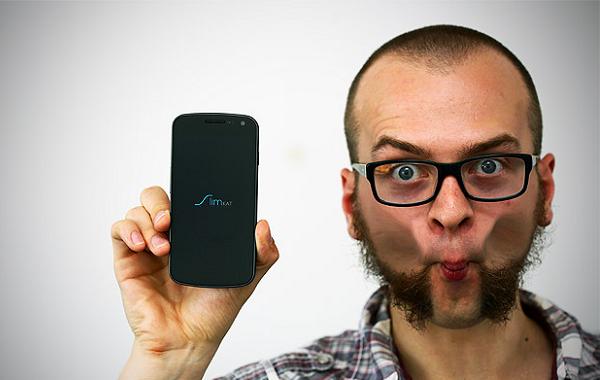Last Updated on April 6, 2017 by Mathew Diekhake
While the SlimROM team are working hard producing Android Lollipop ROMs, they have only pushed out a few Alpha builds for Nexus devices. There’s still a long way to go before the long list of supported devices in the SlimKat system have Lollipop. Luckily the team has a new weekly build 8.0 based on Android 4.4.4 KitKat for owners of the Samsung Galaxy Note 3 LTE device to sample.
Since we have weekly builds, we know the custom ROM experience is stable enough to try out on your daily phone. You don’t need to install the following on a secondary mobile. Readers can check out the official change-log provided by the team here. You’ll notice how much work is previously done which should make you feel more confident with the installation.

You can’t install a custom ROM until you have root access on your phone. The following will not unlock your device away from the restrictions in place by the manufacturer. You must sought after that guide and come back after it’s unchained.
- You will wipe the ROM and the data during the steps. That means you must backup the data to the internal storage, computer or in the cloud if you want to have a spare copy. No backup means no phone contacts, settings, pictures, videos and music files after the installation.
- You must have a custom recovery installed before starting the guide. Choose from either team Win’s TWRp or ClockworkMod.
- You can back up the data by using apps from Google Play such as Titanium, or by taking a Nandroid backup. Nandroid is our choice since it lets users backup the pictures, music, videos, apps and games, saving the progress of games, text and picture messages, ringtones, widgets, account settings, login details, password and most other things. A Nandroid is taking a mirror image of the ROM and saving it to the internal storage.
- Take the Nandroid backup after entering recovery mode during the guide. That’s the most efficient way.
– otherwise you can test out the online Nandroid backup app from Google Play which does it without rebooting. - Apply the following only for the Note 3 LTE variant and no other. The files are specifically made for each device.
- Furthermore, you can choose to back up the EFS folder before going any further. That means you’ll have a copy of the IMEI number if it’s wiped. The application does not stop IMEI corruption, but it does guarantee you can fix most problems. Test the Samsung EFS backup app here.
- The USB charging feature takes care of the battery since the phone is plugging into the computer for most of the guide. However, you still want to reserve some power to make sure it lasts through the flashing.
- You must have a computer to transfer the files. Using a computer is safer than downloading them directly to the phone.
- Do not attempt to install a custom ROM unless you are an advanced Android users. As great as our guides are, there are always complaints from those who don’t know what they are doing.
Update To SlimKaT Build 8.0 Android 4.4.4 Kitkat on Samsung Galaxy Note 3 LTE
- Download the custom ROM here.
- Download the suitable Gapps pack here.
- Use the desktop of the computer for both files.
- Connect the Note to the computer.
- Transfer the files to the internal SD card of the phone.
- Disconnect from the computer and turn off the phone.
- Boot it back up in recovery mode.
- Now’s your last chance to back up the data with the Nandroid.
- Follow the path for your recovery option.
- CWM users:
– select the wipe data/ factory reset option from the CWM menu.
– choose ‘install zip from sdcard’, followed by ‘choose zip from sdcard’. - TWRP users:
– select wipe from the TWRP menu.
– select “install’ from the menu. - Pick out the custom ROM file and upload the same.
- Follow the same steps only for the Gapps this time.
- Go back to the main recovery screen and pick the “reboot system now” option.
The first reboot takes longer than the usual booting process. However, it will start-up the unofficial Android 4.4.4 ROM. Apply a factory reset or a hard reset on the device if you are experiencing any problems such as a boot loop where you can’t get past the boot logo.
